When should I mow ? A wildflower meadow changes appearance almost weekly so when should I mow my wildflower meadow. In mid to late summer just one look will tell you when it’s time to mow your meadow.
Why Is Mowing An Important Part Of Meadow Maintenance?
Managing a wildflower meadow – whether it’s large or small – is all about 5 things
- Reducing soil fertility
- Suppressing grasses
- Conserving wildflowers
- Controlling unwanted species
- Encouraging more wild flower species
Mowing plays an important part in all of these things.
The benefits
By cutting off and removing dead, dying and excessive vegetation, all of the soil nutrients that have been drawn up and stored in leaves and stems will be taken away. Nature’s way is to have dead vegetation recycled into more plant nutrients. Either by direct decomposition or by being passed through animals. As gardeners, we know that our soil is probably already too rich to sustain many wildflower species, so we aim to break the cycle in order to continually create better growing conditions for our wild flowers.
Grasses thrive on higher nutrient soils. Mowing will not only weaken the grass plants but will also reduce soil nutrient levels. This (in theory) suppresses the grasses so that they do not outcompete our flowering plants.
By suppressing grasses and reducing soil fertility, wild flowers are conserved.
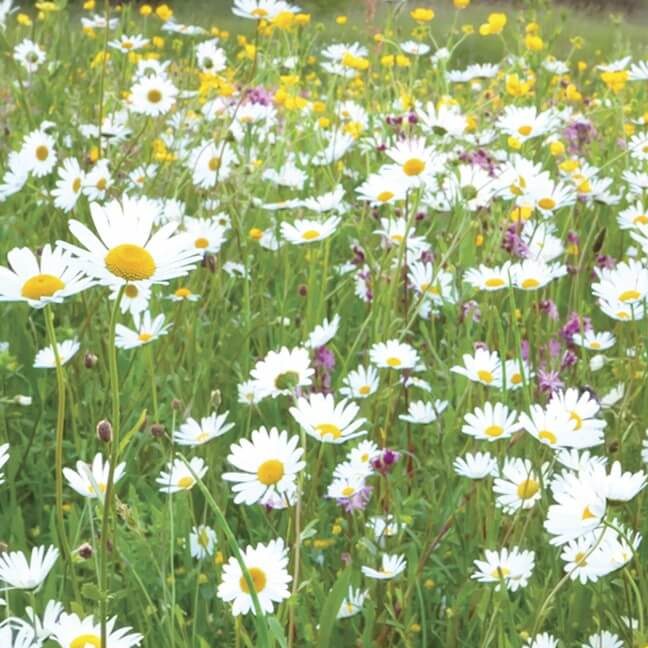
This wildflower area is about 3 weeks away from needing a cut. At the moment, there are some spent flower heads but plenty more in bloom. Once this flush of flowers is over and the grasses have turned golden, the foliage will most likely flop over and look rather messy. Once it starts to fall, the vegetation needs to be cut and removed before it suffocates the plants in the bottom of the sward.
When should I mow – what have you actually got growing…
Mowing also allows us to get up close and personal with the meadow area and spot any unwanted plants in there. Personally there are very few plants that I dislike but I can see why somebody would want to discourage thuggish species in their wild flower meadows. When we mow we also weaken and ultimately kill scrub like plants – tree saplings and woody plants that have set seed and grown in the area.
Encouraging more wild flower species is always an exciting thing to do. When the meadow is mown short it’s possible to plug in some new plants or drop seeds into the sward. Ecologically speaking it’s great. Gardening wise, it’s interesting and it’s fun.
When should I mow – choosing the best time to mow your Wildflower Meadow
It’s difficult to describe in writing, but as a gardener, you “just know”. Somehow, what was beautiful, verdant and flourishing last week just looks tired, dull and, quite frankly, messy.
When the grasses have turned brown, the oxeye daisies have fallen over and most of the flowers disappeared, it’s time. Unless you want to preserve seed heads for flower arranging and bird seed. In which case, hold back until you are ready – or mow around the plants you want to keep.
In my own garden, meadow mowing time usually comes between late June and mid-July. This year, the species mix is a little different – Nature’s doing, not mine – and so I’ve changed my tactics.
I’m writing this in late July. Some areas of my mini-meadow look great. There are teasels, mullein, wild carrot and yarrow blooming their socks off. But, where there were mainly grasses and oxeye daisies, vetch and plantains – it looks a bit rough. So – I’ve mown the rough bits into paths and clearings and left clumps of colour. To be honest, I think I like spreading the workload in this way.
When should I mow – how to mow your wildflower meadow – Tools
I hate to be a party-pooper but my number one rule for meadow maintenance is “Leave the strimmer in the shed”. Strimmers – the ones with the cords – bash the plants into little pieces and spread debris all over the place. That’s ideal if you want to return nutrients to the soil, but the whole ethos of meadow management is to stop that happening. So you need an alternative tool to the strimmer.
A scythe is the ideal tool for meadow management but unless you’ve been taught how to use one properly you could do yourself a lot of damage. They’re sharp and they’re not kind to your back. There’s a technique to using one that is easy on the back muscles and keeps your ankles safe from lacerations.
For a very small area, hand shears are ideal. It’s actually quite fascinating to get down to ground level and see just how many small creatures call your wild flower area home.
Mowers….
Most lawn mowers won’t tackle very long vegetation. Some will though. My Honda is pretty good. I do need to empty the grass box quite frequently and I have to run over the area several times to get all the bits that have been squashed down – but it’s do-able. The mower isn’t my first choice of tool. I only use it where there is lots of grass and few wild flowers. The whole idea of mowing is to let seeds fall into the sward before you take the stems and leaves away. Lawn mowers don’t let that happen.
The tool that is on my wish list though, is one of those long handled hedge trimmers. It’s like a strimmer but instead of a whizzy string at the end, it has a moving blade. It looks awesome. (I hope Santa Claus is reading this).
How To Mow Your Meadow – Technique
Unless I’m fiddling about mowing paths and avoiding some of the plants, I just start in one corner and cut a swathe through the meadow area. If I’m using my lawn mower I have the grass box on so that I collect all the debris. The disadvantage of that of course is that seeds do not fall back into the sward.
A scythe automatically sweeps the cuttings behind you and leaves them on the ground where they can dry and disperse their seeds before being removed. Ditto hand shears.
If you are aiming to keep regenerating the flowering species in your meadow, leave all of the clippings to dry in the sun for a day or two. But otherwise better to pick them up, shake them and turn them over a couple of times during the drying period. When the hay is dry enough, you can store it and use it for pet food and/or bedding.
Once the clippings have been removed, the whole area will look awful for a couple of weeks. Don’t worry though, as soon as we get some rain, the plants will start to green up and regenerate.
Mowing In The Autumn And Winter
It’s not essential that you mow your wildflower area in autumn and winter but it does help keep soil fertility down and it does keep things looking neat.
Use a lawn mower with the grass box on. Make sure the blades are sharp. Never scalp wild flowers – the lowest you should allow the sward to get is 10cm (4 inches). Be sure to remove every last clipping.
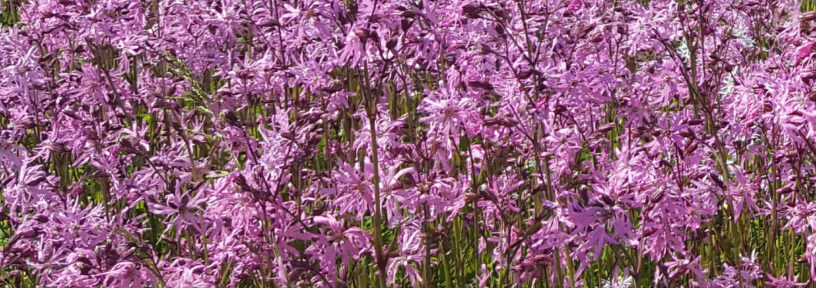
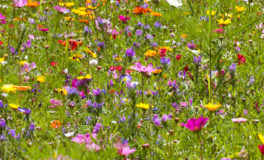 Meadowmat Species
Meadowmat Species 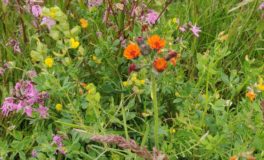 Caring for your new Meadowmat wildflower turf
Caring for your new Meadowmat wildflower turf 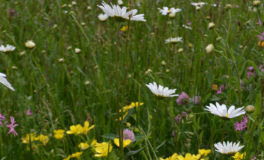 How to lay Meadowmat wildflower turf
How to lay Meadowmat wildflower turf 

